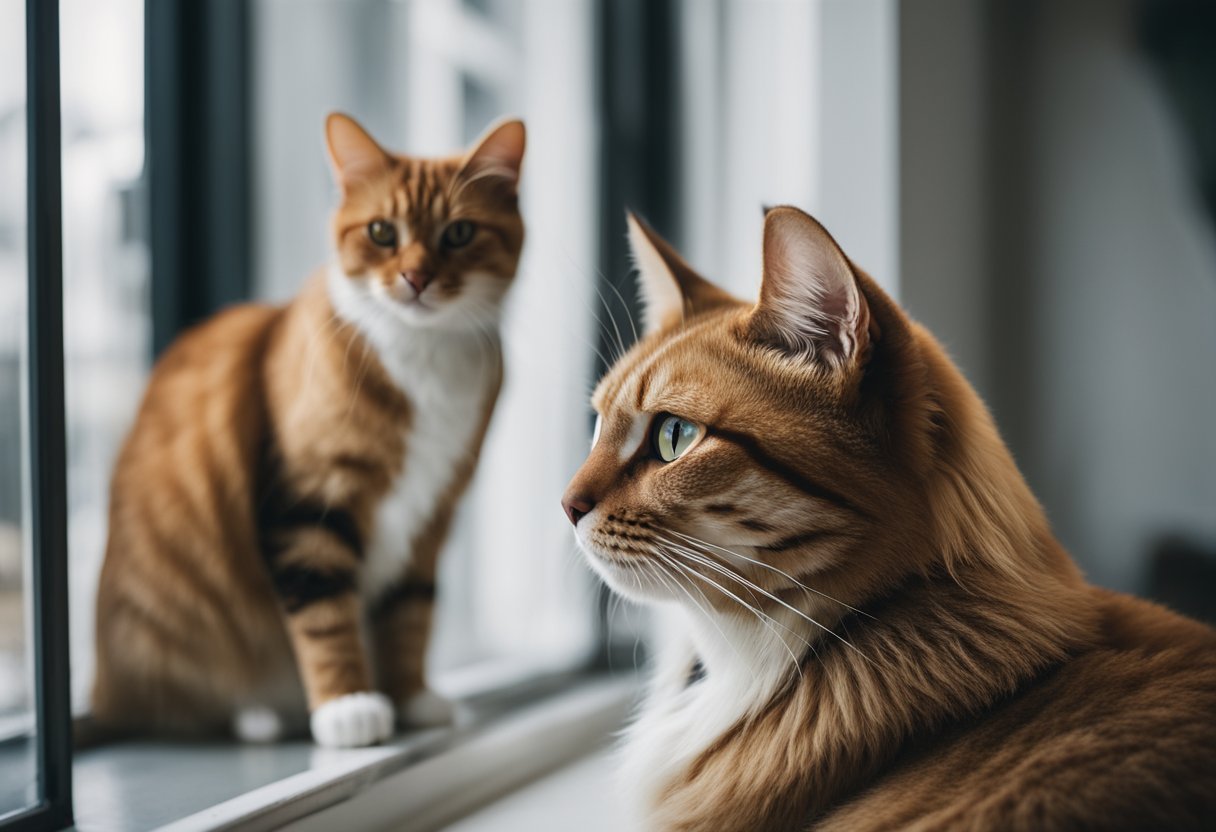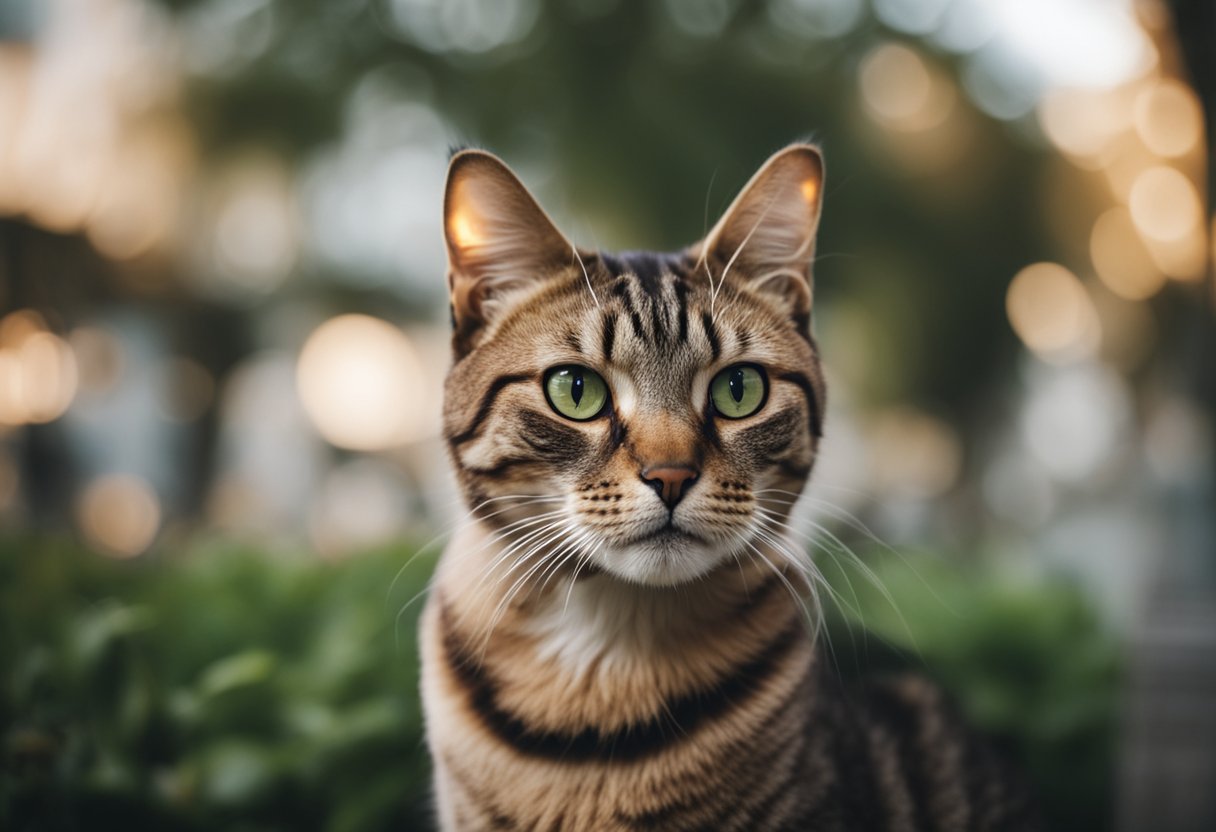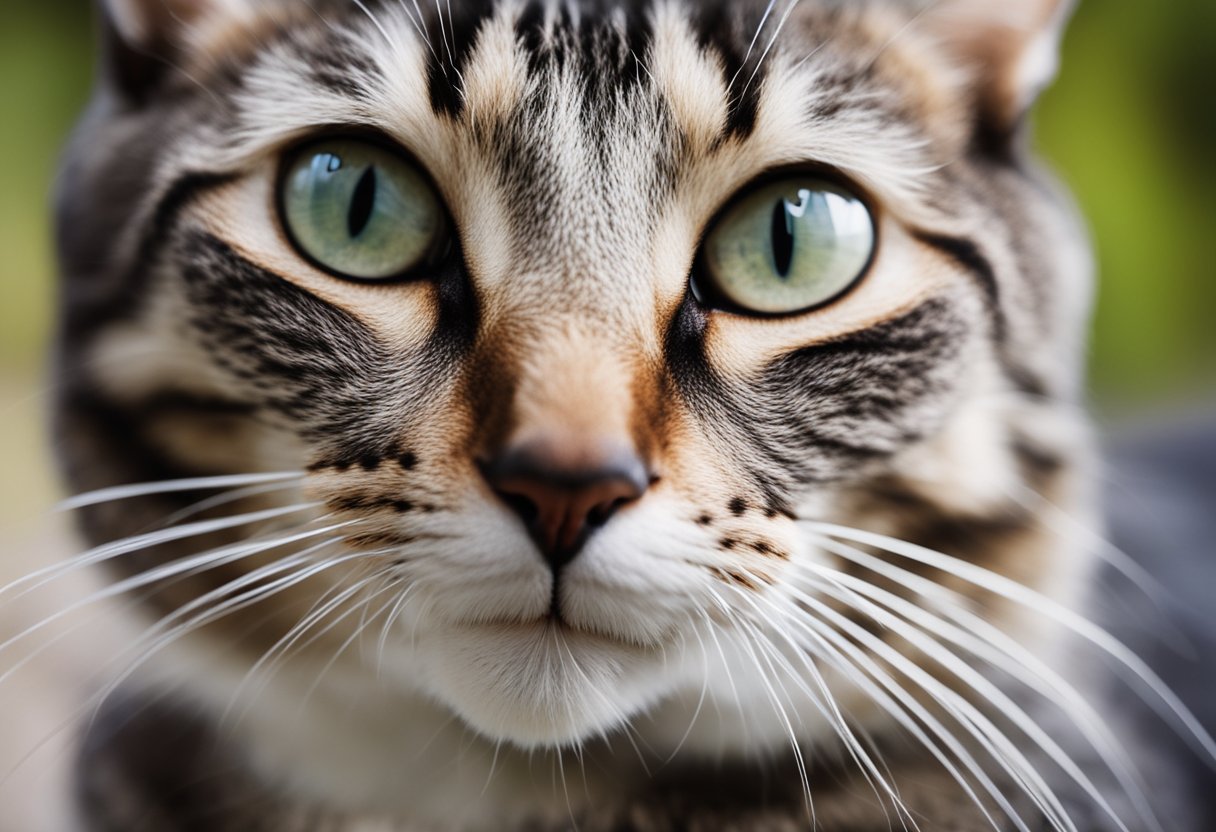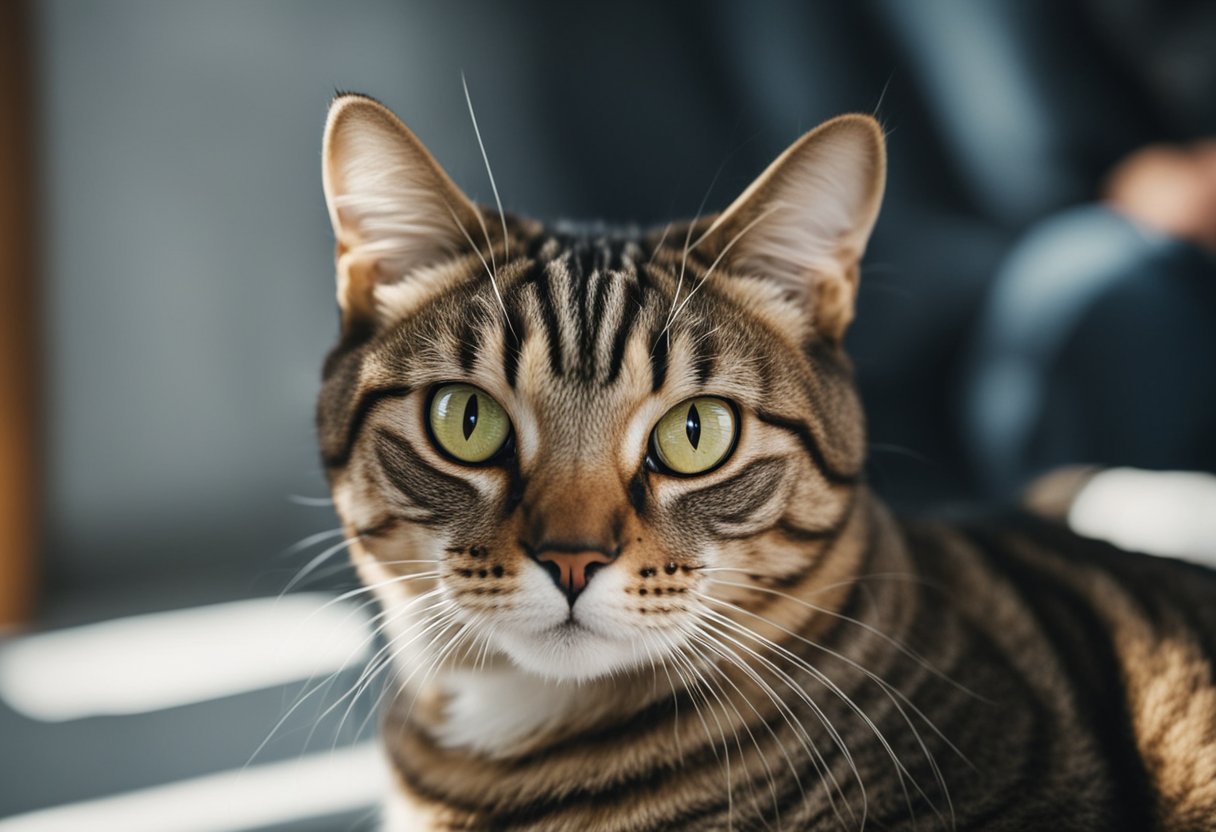Cats are known for their enigmatic behaviors, and their avoidance of eye contact is one curiosity that often perplexes their human companions. Unlike humans, who may see direct eye gaze as a form of communication or connection, cats interpret such behavior differently. In the realm of feline interactions, direct eye contact is often seen as a sign of aggression or challenge. By avoiding eye contact, a cat is likely expressing its non-confrontational stance and also respecting the personal space of others, whether they are fellow felines or humans.

Understanding the reasons behind a cat’s tendency to shy away from eye contact requires a deeper insight into their social and communication mechanisms. Cats rely heavily on body language to express their emotions and intentions. Subtle cues, such as the positioning of their ears, tail, and whiskers, play a significant role in how they communicate. Eye contact—or the lack thereof—is just one of the many complex behavioral traits that characterize these independent yet affectionate animals. For cat owners, recognizing and respecting their pet’s body language, including their avoidance of eye contact, is essential for a harmonious human-cat relationship.
Key Takeaways
- Direct eye contact may be perceived as aggression by cats.
- Cats communicate through body language, with eye contact playing a significant role.
- Understanding cats’ non-verbal cues is crucial for a positive human-cat relationship.
Understanding Feline Body Language

Interpreting feline body language is critical for understanding their behavior and emotions, particularly regarding eye contact, facial expressions, and physical posture.
Defining Direct Eye Contact in Cats
Direct eye contact in cats can be a complex signal. It’s commonly understood by felines as a form of aggression or dominance. When a cat gazes directly into another’s eyes, it’s often seen as a challenge and can lead to an escalation of tension. Consequently, cats may avoid eye contact with humans and other animals to maintain peace and show deference.
Facial Expressions and Ear Positions
Cats express a wide range of emotions through their facial expressions. Subtle changes can indicate different feelings. A relaxed cat might have a soft gaze and slightly open eyelids, indicating comfort or trust. Flattened ears are a sign of fear or aggression, while ears turned sideways or back can convey nervousness or irritation. Recognizing these signals can aid in understanding a cat’s mood or intentions.
Tail Movements and Posture
A cat’s tail and posture can reveal a lot about its emotional state. A tail that’s held high typically suggests confidence and contentment, while a low or tucked tail might indicate fear or submission. Tail movements, like lashing or puffing up, are also indicative of emotions ranging from irritation to aggression. The overall body posture, such as a crouched position or arched back, helps further communicate a cat’s feelings or behavioral inclinations.
The Significance of Eye Contact in Cats
In feline communication, eye contact carries diverse meanings, ranging from a sign of aggression to a gesture of affection. Recognizing these subtle cues is crucial for interpreting cat behavior accurately.

Eye Contact as a Threat Signal
Cats often perceive direct eye contact as a threat or show of dominance. When two cats stare at each other, it’s typically a precursor to a confrontation. Avoiding eye contact, on the other hand, can signal fear or submission. A cat that averts its gaze may be trying to deescalate a tense situation or express that it is not a threat.
Slow Blinking and Affection
Conversely, slow blinking in a cat can indicate trust and affection. When a cat slowly closes its eyes in someone’s presence, it’s akin to a human smile—a sign they feel comfortable and safe. This action transforms eye contact from a potential threat into a moment of vulnerability and love.
Staring and Aggression
In contrast to slow blinking, prolonged staring can be a sign of aggression in cats. A cat that maintains eye contact with a fixed, intense stare is signaling its willingness to assert dominance or begin a conflict. Context is important, however, as a prolonged stare could also mean curiosity or alertness to strange stimuli.
Cat Communication Mechanisms

Cats employ a complex system of communication that includes both vocalizations and body language, distinguished by their nuanced and often subtle nature. Unlike humans, felines may avoid direct eye contact as part of their communication repertoire.
Vocalizations and Verbal Cues
Cats utilize an array of vocalizations to express themselves and communicate with one another as well as with humans. These verbal cues include meows, purrs, hisses, and growls, each holding specific meanings. A content and relaxed cat might purr, whereas a hiss typically indicates fear or aggression. Understanding the variations in cat vocalizations is essential for interpreting their intentions.
Physical Actions and Reactions
Aside from communicating through sounds, cats also communicate extensively through body language. Their posture, ear orientation, tail movements, and eye signals all convey different emotions or intentions. For instance, a cat flattening its ears may feel threatened, while a slow tail flick can indicate irritation. When it comes to making eye contact, cats might avoid it as a form of non-confrontation, as direct eye contact can be perceived as a challenge or a threat in the feline world.
Emotional States and Cat Behavior

Cats communicate their emotional states through various behaviors, including their tendency to avoid eye contact. By observing a cat’s body language, one can discern their mood and personality, which are crucial for understanding their comfort levels and intentions.
Understanding Fear and Anxiety
When a cat experiences fear or anxiety, its instinct is to avoid direct eye contact as a means of self-preservation. They may perceive sustained eye contact as a threat, which can trigger a fight or flight response. In such states, a cat will often seek refuge in a safe place, turning their gaze away to avoid confrontation.
Comfort and Curiosity
A relaxed and comfortable cat may show curiosity and interest but still avoid direct eye contact. Soft blinking or averted eyes can signal their calm demeanor and affection towards humans or other animals. This subtle body language indicates they feel safe and are open to engagement without feeling threatened.
Aggression and Playtime
During playtime or in moments of potential aggression, a cat’s eye contact is dynamic. Dilated pupils and intense staring can precede playful behavior, but they can also denote irritability. Recognizing the difference is key to understanding whether a cat is inviting interaction or requiring space.
Social Dynamics and Behavior Patterns
In the complex world of feline interaction, social dynamics play a crucial role in determining a cat’s eye contact behavior. Subtle cues can indicate various states such as dominance, submission, or the deepening of trust between a cat and its owner or other animals.
Dominance and Submission
Cats communicate their position within a social hierarchy through body language, including the use of eye contact. Direct eye contact may be perceived as a challenge and represent dominance, while averted eyes often signal submission. In multi-cat households, observing how cats interact with each other can reveal their social rankings; dominant cats may stare down subordinates, who will typically turn away to avoid confrontation.
Bonding and Trust Building
Bonding between cats, and with their human companions, hinges on trust which can be fostered through respectful eye contact. Gentle blinking, for example, is akin to a feline smile that can help in building trust. When a human mimics this behavior, known as a “cat kiss,” they can communicate affection and create a more trusting bond. Avoiding direct eye contact can also be a cat’s way of showing they are comfortable in their owner’s presence, as maintaining a constant stare is not a relaxed natural behavior for them.
Misunderstandings and Behavioral Issues
In some cases, avoiding eye contact is misinterpreted by owners as disinterest or aloofness, but it is often an indication of a cat’s discomfort or anxiety. Understanding that avoiding eye contact can be a sign of feline anxiety can prevent misunderstandings and help address underlying behavioral issues. Owners recognizing the nuances of feline eye contact—and the lack thereof—can respond appropriately to their pet’s needs and comfort levels, thereby reducing stress and avoiding potential behavioral conflicts.
Human and Cat Interactions
When it comes to building a relationship with a cat, understanding the nuances of body language, particularly eye contact, is crucial. One must navigate these interactions with care to foster trust and a strong bond.
Initiating Contact and Gaining Trust
To gain a cat’s trust, one should approach them in a non-threatening manner, avoiding direct eye contact initially. Softly blinking at a cat, often referred to as a “kitty kiss,” is an effective way to initiate contact and show benign intentions. This action can help in building trust, signaling to the cat that you are not a threat.
Reading Cat’s Signals
Cats communicate more subtly than humans, using their body language as a primary means of expression. Direct staring can be perceived as confrontational, potentially leading to annoyance or a feeling of being threatened. Cat owners should look for signs like averted gaze or dilated pupils, which indicate discomfort, and respect these signals by giving the cat space.
Positive Reinforcement
Utilizing positive reinforcement is key in strengthening the connection between a cat and their owner. Offering treats or gentle petting when a cat responds well to eye contact can reinforce trust. Moreover, actions such as gentle kneading on their owners signal contentment and bonding, reinforcing the positive aspects of human-cat interactions.
Special Considerations for Cat Care
In addressing cat care, particular attention to their unique behaviors shaped by domestication and past experiences is crucial for a conducive and nurturing environment.
Understanding the Impact of Domestication
With domestication, cats have retained much of their natural instincts, which differ significantly from those of dogs. Unlike dogs, cats may not seek or interpret eye contact in a friendly manner. Instead, understanding feline body language is essential; a direct gaze could be perceived as a sign of aggression. Consistency in daily routines—from food schedules to playtime—helps reinforce a secure environment for domestic cats.
Dealing with Rescue Cats and Negative Experiences
Rescue cats often carry the burden of negative experiences that shape their behavior and responses to humans. It is essential to approach these cats with patience and empathy, acknowledging their past and giving them time to adjust. Here are some tips for handling rescue cats:
- Slow Introduction: Gradually introduce yourself to avoid overwhelming the cat.
- Predictable Environment: Maintain a routine to provide a feeling of security.
- Watch for Cues: Pay attention to their body language for signs of discomfort or stress.
Expert Insights and Practical Tips
Gaining a deeper understanding of feline behavior and applying it to foster a better relationship with your cat is possible through insights from experts and practical everyday tips.
Learning from Feline Experts
Feline experts agree that cats often avoid eye contact because it is interpreted as a sign of aggression in the animal kingdom. In cat communication, avoiding eye contact rather than engaging can be a gesture of peace or submission. Cats may also appear aloof or self-conscious due to their instinctual behaviors, which are misinterpreted based on human communication standards.
One informative analysis explains that eye contact in cats is a complex affair, where extended eye contact can be interpreted as a challenge and lead to confrontational behavior. For insights and details on cat communication, the analysis available at The Cat Bandit Blog offers an explanatory perspective.
Applying Knowledge to Everyday Situations
When interacting with a feline companion, understanding their preference to avoid eye contact can help deepen the bond of trust. Showing love to a cat doesn’t always involve staring; rather, it can be expressed through other means like the slow blinking technique, which conveys affection and a non-threatening attitude.
In practical situations, a simple technique can be used:
- Slow Blinking: Gently close your eyes while facing your cat and open them slowly to mimic a cat’s affectionate gesture.
In applying knowledge of feline behavior, remember that cats are creatures that cherish trust and respect for their natural inclinations. Patience and gradual introduction of water during bath time, for instance, show respect for the cat’s natural apprehension toward new or potentially unsettling experiences. This cultivates an environment where the cat feels safe and loved. For a detailed guide to understanding your cat’s body language in differing contexts, Catster’s expert advice provides a comprehensive overview.
Frequently Asked Questions
In understanding feline behavior, it’s important to note that cats communicate and perceive social cues differently from humans. Here, common questions about cats and eye contact are addressed to provide clarity on this aspect of their behavior.
Is it common for cats to dislike sustained eye contact?
Yes, it is quite common for cats to dislike sustained eye contact. They often perceive it as a sign of aggression or a challenge to their dominance.
What are the implications of making eye contact with a cat?
Making eye contact with a cat can be interpreted by the animal as threatening. In cat-to-cat interactions, direct stares can escalate to confrontations.
Do cats interpret direct eye contact differently from humans?
Cats interpret direct eye contact quite differently than humans do. For humans, eye contact can signify trust or attention, but cats may see it as confrontational or intimidating.
What does it mean when a cat looks away from you?
When a cat looks away from you, it might be signaling discomfort or attempting to de-escalate a situation it perceives as confrontational.
How can you respectfully establish eye contact with a cat?
To respectfully establish eye contact with a cat, one should use peripheral vision or practice slow blinking to convey non-threatening intentions.
Why might a cat avoid looking directly into a person’s eyes?
A cat might avoid looking directly into a person’s eyes as an instinctual behavior, signaling that it does not seek conflict and that it acknowledges the person as the dominant party.

